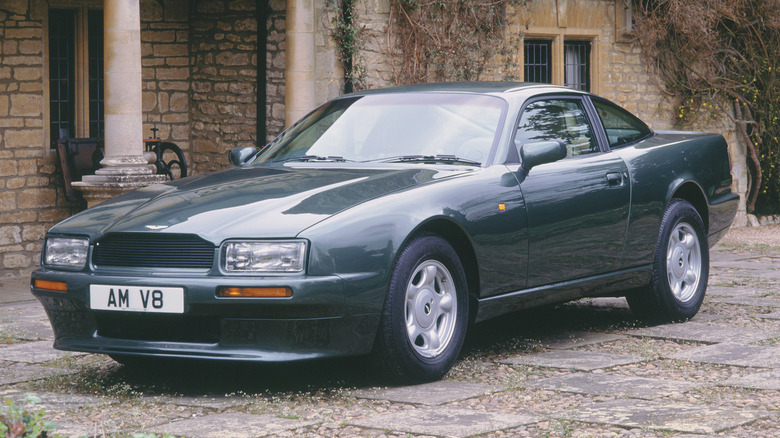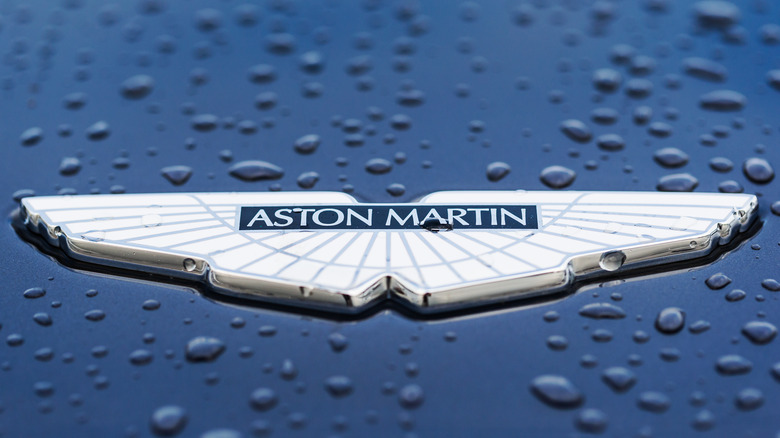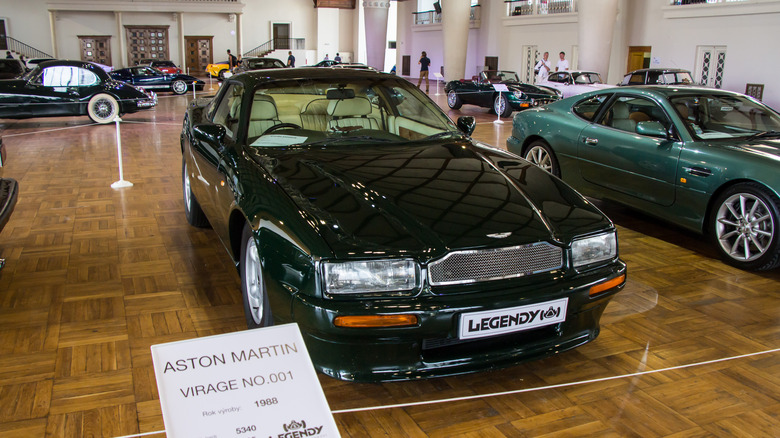The Real Reason America Banned The Aston Martin Virage
Debuting at the Birmingham Motor Show in 1988, the Aston Martin Virage was not only the first all-new platform in 20 years for the bespoke automaker, but the final "hand-built" car to roll off the line at the Aston Martin Lagonda factory in Warwickshire, according to Aston Martin. Positioned above the six-cylinder DB7, the Virage was a continuation of Aston Martin's famed V8 lineage as well as the dedicated flagship car at the time.
With only 1,050 units produced from 1989 through 2000, the Virage remains one of Aston Martin's rarest production cars — especially if you live stateside. Arriving on the shores of America in 1990, the Virage would have a short lifespan in the States before its banning from the American domestic market in 1993 as a result of increasingly stringent laws passed in Congress and adopted by the National Highway Traffic Safety Administration, or NHTSA (via Auto Evolution).
How the Virage came to be
According to Aston Martin (linked above), the Virage was derived from the chassis of the Lagonda, featuring a fresh and contemporary styling when compared to the previous V8 series. Even when peeling back the curtain to find outside its hand-beaten, aluminum bodywork, the Virage is largely a parts-bin car as a result of Aston Martin's merger with Ford Motor Company in 1987, Auto Evolution states.
An amalgam of previously built Aston Martin parts and components sourced from multiple carmakers, Auto Evolution went on to explain that the Virage would feature a version of the Tadek V8 engine originally built in 1969 for the DBS, a ZF Friedrichshafen transmission, the headlights of an Audi 200, and taillights sourced from the VW Scirocco.
The result, however, was one of the most exclusive, beautifully-designed Aston Martins ever produced. Capable of 330 horsepower and 350 pound-feet of torque, the bulky Virage was still able to reach a top speed of 145 MPH, according to Hemmings.
Stringent laws ended the Virage's U.S. vacation quickly
But when it came to the banning of the Virage in the United States, the reasons are a lot less arbitrary than you'd think. America's governing traffic safety body, the NHTSA, is widely known to have some of the strictest standards as they relate to passenger vehicles in the world.
According to MotorBiscuit, the first of the two reasons has to do with the number of airbags, or lack thereof. Ultimately made law in 1998 (PDF), the NHTSA began to require front airbags for both driver and passenger as it related to production vehicles. The Virage would feature driver-side airbags, however, the person in the passenger seat would not be given the same luxury. But it wasn't the lack of airbags that would be the nail in the coffin for the Virage in the States. That reason is afforded to the Clean Air Act passed in Congress in 1970, before being adopted into the NHTSA's safety testing of vehicles to be sold in America. As the Virage didn't pass the Clear Air Act's emission standards, it was banned from sale in the United States.
On the bright side, it has been more than 25 years for most of the model years of the Virage, allowing Americans to import the Aston Martin as they please. The downside, as we mentioned earlier, is that there were only 1,050 were built — making the entrance fee to Virage ownership a pricey one.


